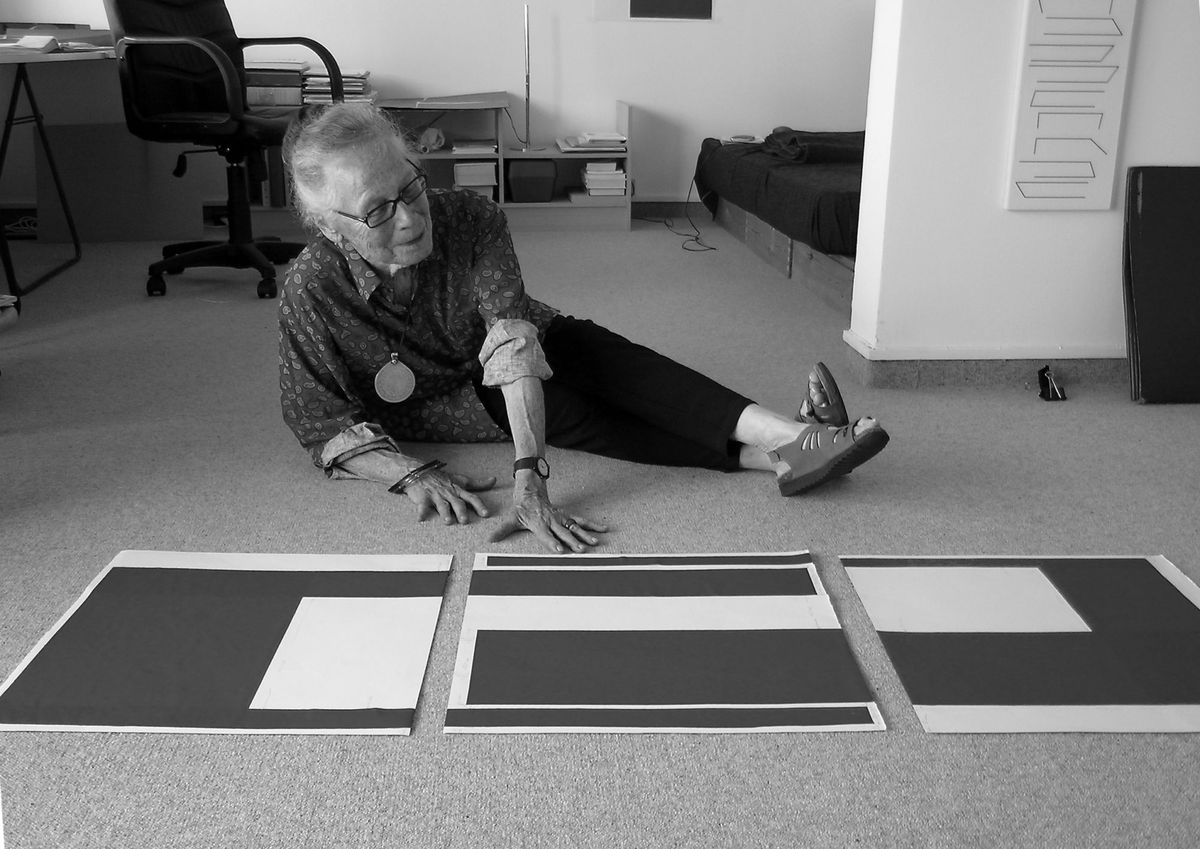When it comes to early generative art, one name that resonates is Vera Molnár's. She has been at the forefront of computer-generated art since the late 1960s, at a time when the concept of computer art was not something that was previously heard of. With her enormous influence on the field, she has cemented her name as the grande dame of computer art.
Even though there's many resources that recount Vera Molnárs life, and the events of her artistic career throughout years; most of them only provide brief snapshots into specific periods of her life.
The main challenge in putting this article together, was finding a logical and chronological recount of the events; drawing a complete picture from excerpts from the many interviews that she has done over the years proved to be tricky.
A complete list of the referenced material can be found at the very end.
Art before the Machine
Throughout her life, Vera Molnar has made a lot of art, and has amassed a large body of work over the years. Working with computers for the first time in 1968 was a pivotal moment, not only for her career but equivalently for the field of generative art as a whole.
Hence, we'll first have a look at her artistic career and influences leading up to that moment, which will help us better understand her approach to working with computers later on.
Early Life
Vera Molnar was born in Budapest in 1924 and showed an interest in the arts from a young age.
In a conversation with Barbara Nierhoff from 2006, she provides a good recount of her earliest childhood experiments and how she discovered an algorithmic method towards art.
At the age of ten, she would spend many an evening drawing the view of Lake Balaton from her parents home:
Every time she drew the scenery, she used the same five colors: green for the meadow leading to the water, blue for the lake, brown for the mountain range on the other side of the lake, blue for the sky and orange for the sunset.
Growing tired of the repetitive color scheme she decided to change it up with a self-imposed system:
As time went on, Vera Molnar experienced a rising sense of dissatisfaction at the close resemblance between her depictions of the familiar landscape, which prompted her to start using adjacent colors in the paint box for each visual element. Thus, at this young age, she had already conducted her first systematic investigation guided by principles that still inform her work today.
Vera Molnar was thinking like a programmer, before she knew what a computer was. This systematic approach to art making, that came to her in a seemingly natural manner during her childhood, would later become the principal method with which she creates her artworks, before and after using computers as the primary medium. In an interview with artnet she adds to a similar childhood recount "It’s not far from my mindset now".
From 1942 to 1947 she pursued an art degree at the School of Fine Arts in Budapest where she studied painting, art history and aesthetics. In an interview with Amelia Spalter for Brown University Vera explains that she had already decided to be an artist during her teenage years:
What was your family's reaction when you told them of your plans to go to art school?
I remember one morning when I was 16, I said, “Mom, there are some things that I want to tell you: First, I don’t want to play piano, I want to paint. I don’t want to go to church. I don’t want to wear glasses. And finally… I want to make my life in France.” My poor mother, it hit all at once.
But she was an intelligent woman. She told me, “All right, well, there is one thing that is non-negotiable, it’s the glasses. You have bad myopia, and you will get crushed by a car. The rest we will talk about when you come back from school. Now put on your glasses.” And she was right, I still wear my glasses.
It's important to note here, that Vera Molnar did her studies during a time of political upheaval in the world. The national-socialist ideology did not really agree with the concept of modern art, and was at the time labeled as degenerate art. There was not much room for geometry and figurative compositions.
The sudden switch from national-socialism and communism, and the radically different view on art that now accepted when it was previously frowned upon most likely contributed to Vera Molnar's perspective, and not to care too much about what people thought about art. During this time Vera Molnar discovered Cubism and found respite in it:
Did growing up in such a turbulent, often depressing political era contribute to your desire to work in the abstract?
It happened little by little. I painted like a young wealthy girl — portraits of my mother, of a cow — but without passion. And then, I encountered Cubism, which was a decisive moment for me. Cubism, as a painting style that is figurative but constructive at once, helped me.
So, I wasn’t entirely giving up nature, but I stayed in the abstract, even though I didn’t know Cubist icons like Mondrian or Malevich yet. Cubist painting pushed me to where I am today.
Later she obtained a stipend to continue her studies abroad. At the time her primary choices were either Paris or Moscau, however ultimately she was sent to Rome. In good humor she says that such is life. She had absolutely no interest in the paintings of the renaissance however, in an conversation with Sabine Saschl from Museum Haus Konstruktiv she says:
I thought that I would go crazy if I saw one more artwork from Giovanni Bellini. I wanted to see Picasso.
Shortly after that she moved to Paris in 1947, with her future husband to be, François Molnár, who would also proceed to become one of her main collaborators in the coming years.
Arriving in Paris 1947
In the same interview with MHK, Vera Molnar reminisces about arriving in Paris for the first time. She states that in a way she was reborn that day. In fluent German she says:
Da fing die Geometrie an!
Which means as much as "That's when the geometry started!" - the same evening after seeing the Notre-Dame de Paris for the first time, she felt incredibly inspired and put together a number of geometric drawings. In conversation with Jo-Lawson Tancred from Artnet, she explains:
“I had never seen such a grand thing before.” The encounter brought to life an impulse that had lain dormant during her classical training at the Budapest College of Fine Arts.
That very same evening she produced a set of highly geometric drawings of the cathedral’s façade, marking a turning point. “I still didn’t know what I was looking for, but I’d eliminated what I was not looking for,” she said.
In the MHK interview she further elaborates:
In my mind I had ideas that were a mixture of Picasso, Paul Klee, Mondrian... I wanted to make something like that.
In Paris her favorite coffee shop was Le Select in le Montparnasse (it still exists - give it a visit if you find yourself in Paris), where she met other renown contemporary artists like Brancussi, Fernand Leger and Victor Vasarely as well as allegedly Kandinsky. Although that last name on the list might be an inaccuracy; even though Kandinsky lived in Paris, he died in 1944.
In an interview with Hans Ulrich Obrist (more to that one later), she states that she also met Malevich in France, however I also don't understand the timeline on that one, Malevich died in 1935 when Vera arrived in Paris in 1947. Maybe she visited France before, but then again she would still have been a young girl at the time.

Molnar's Art from 1947 to 1960
Vera Molnar created her first geometric images in 1946 - a series of 12 abstract drawings titled Arbres et Colines, which translates to Trees and Hills in English. The artworks are minimalist and figurative representations of natural scenery, where the composing elements are reduced to the bare minimum.
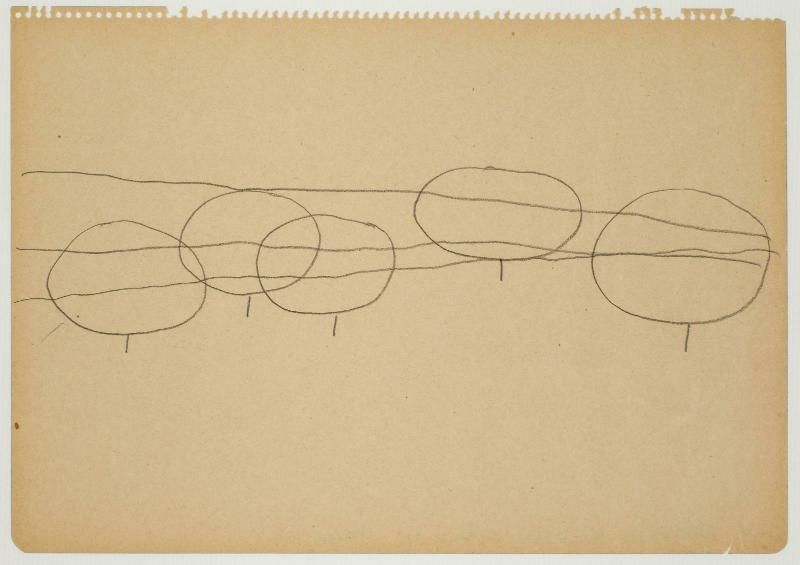
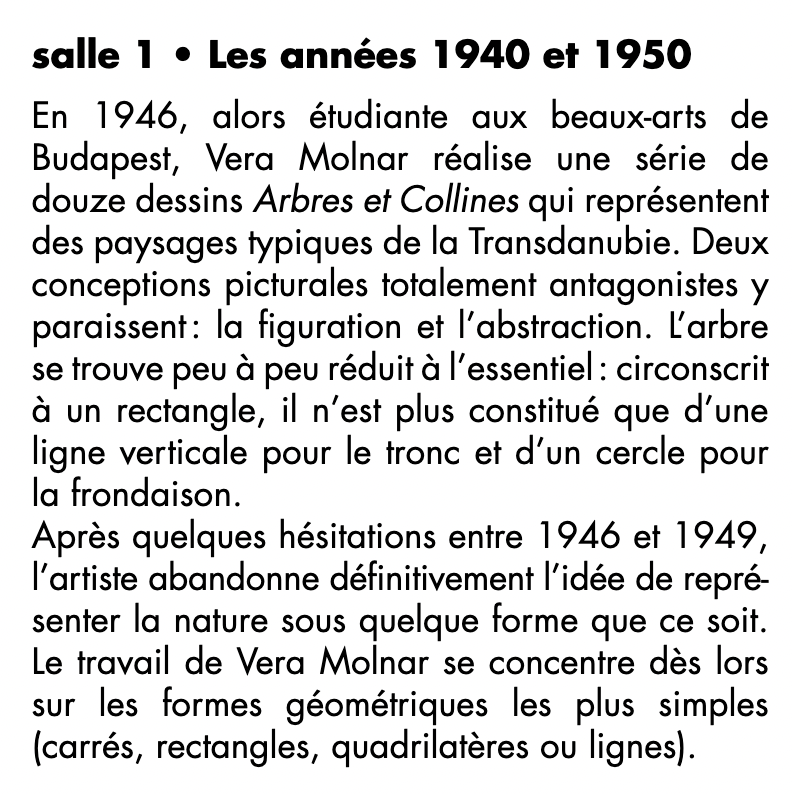
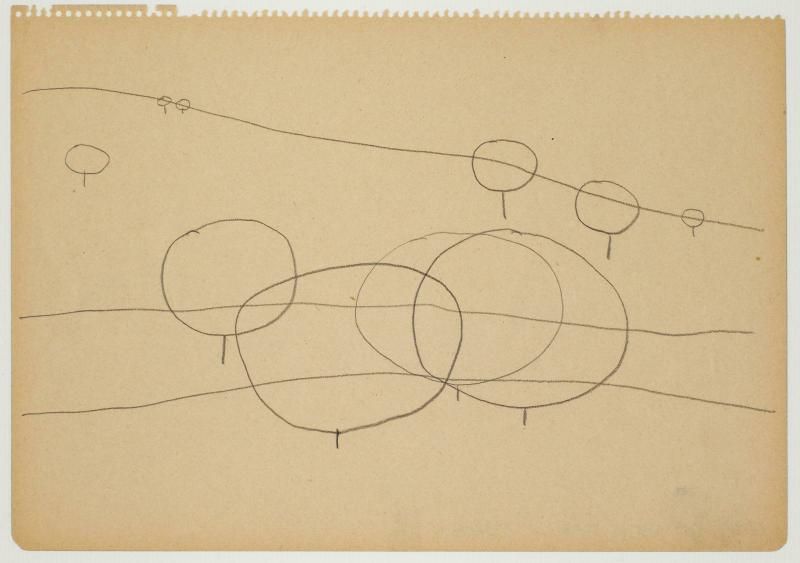
After some back and forth she decided however to completely abandon the depiction of nature and focus on geometric shapes.
The artworks that followed from the same period of time were highly abstract:
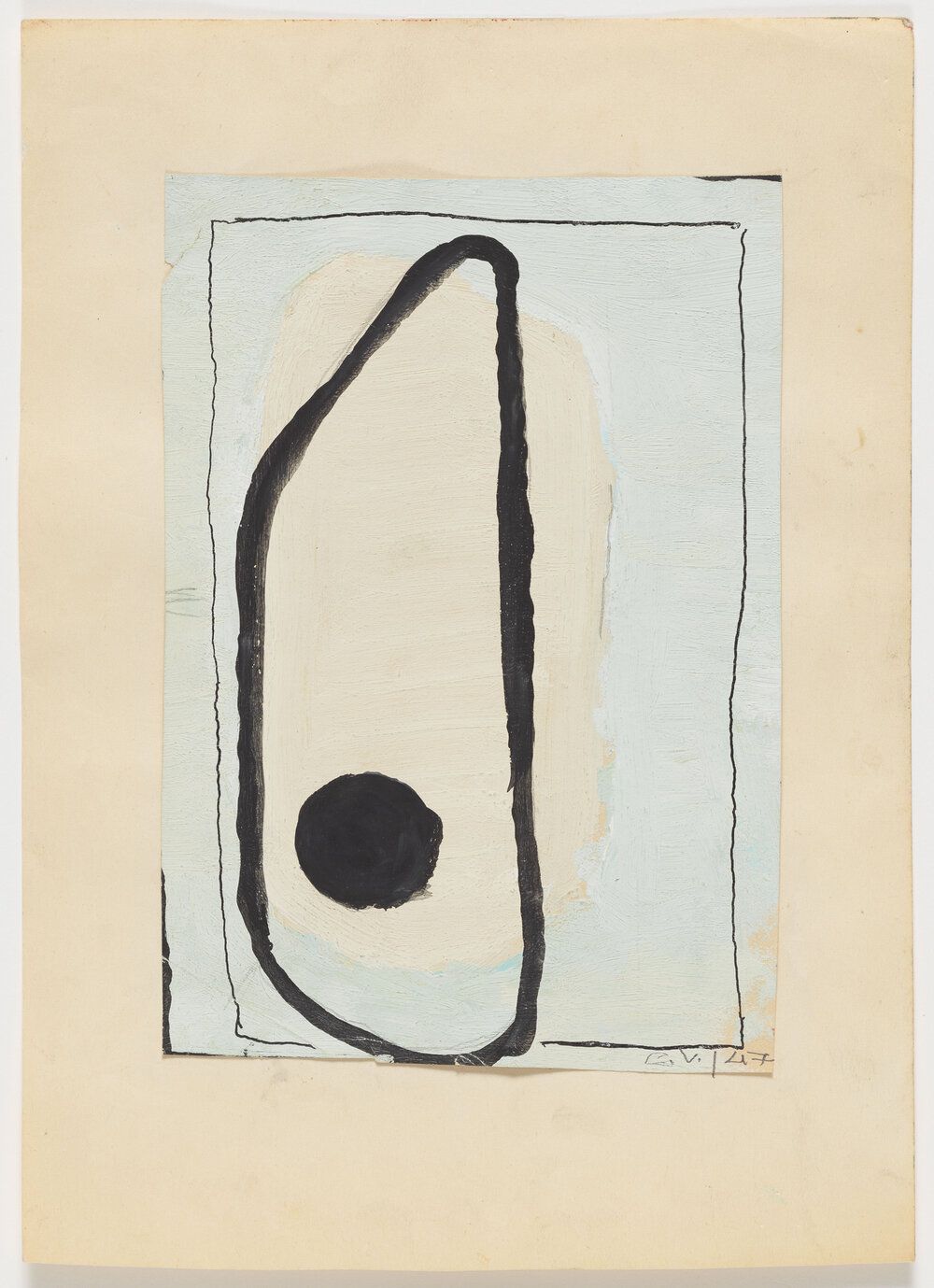
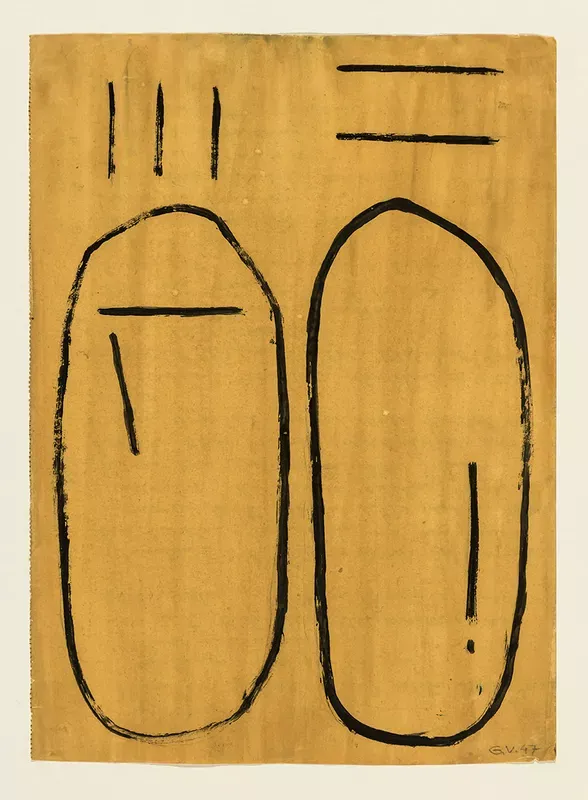

One of her big influences during these days was Sonia Delaunay, who she would visit regularly and become close friends with:
Who was your greatest influence as a young artist?
The first female artist whom I met and who had a huge influence on me was Sonia Delaunay, when I was in France. My husband and I arrived in France in 1947, and we were hungry and had no money. Once a week, always on a Wednesday, we could go to Sonia Delaunay’s house [to show her our art,] and there was tea and as many little cakes as we wanted.
Her art was magnificent, elegant, beautiful, sort of like what is showcased today at Galerie Thaddaeus Ropac. My work was dirty, and not done very well. But she told me, “This young lady, she will go far, if she works very hard.” I thought to myself, “If Sonia Delaunay tells me that, then… wow.”
This shows how meaningful just a couple of words can sometimes be. Would Vera have pushed as far as she did if she hadn't been encouraged by Sonia Delaunay at the time? She proceeded to create a homage to Sonia's work:
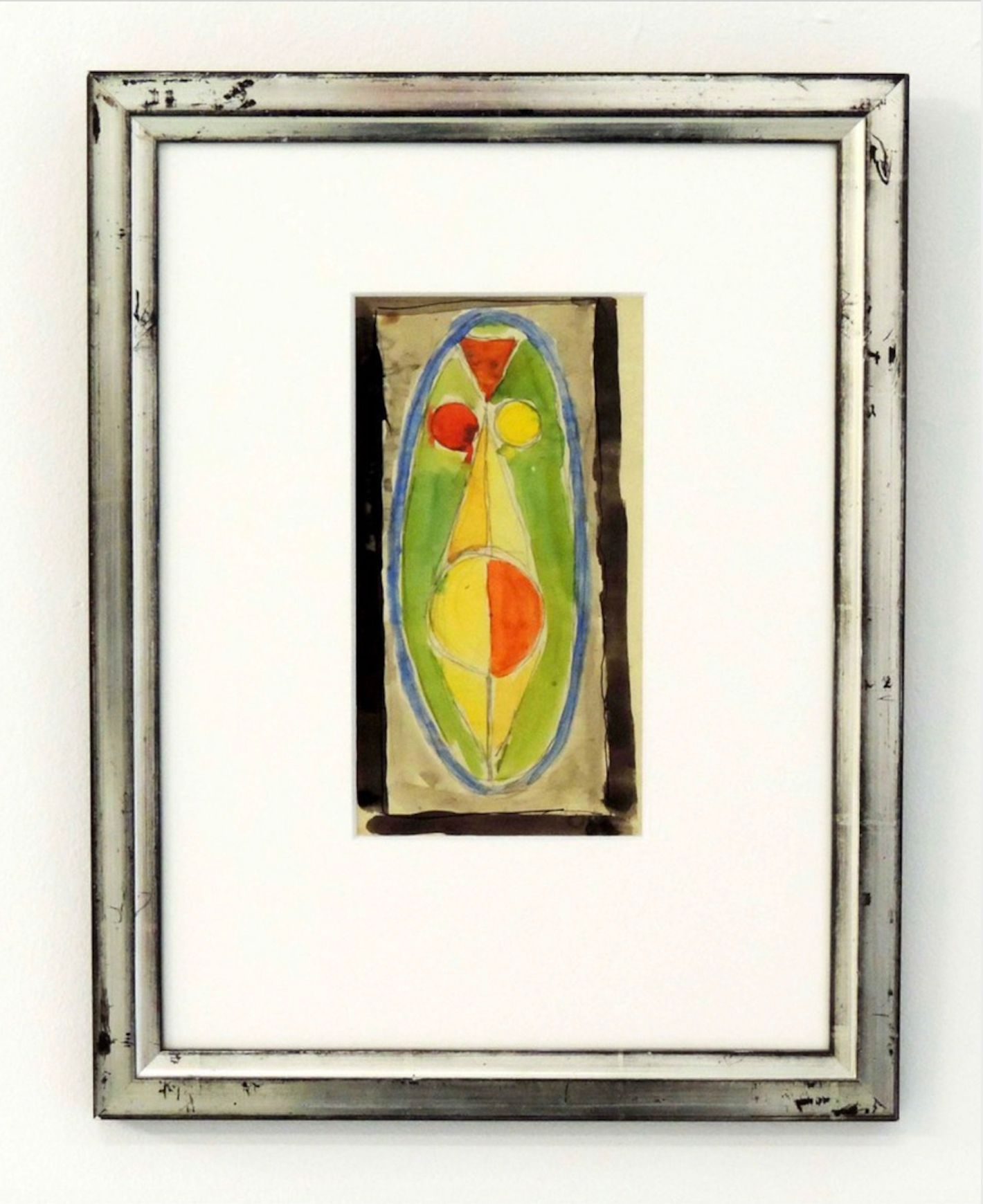
An important component of Vera Molnar's art practice during this time was collaboration with her husband. Their close friend Francois Morellet (himself an accomplished artist) described them as un peintre a deux tetes - a painter with two heads.
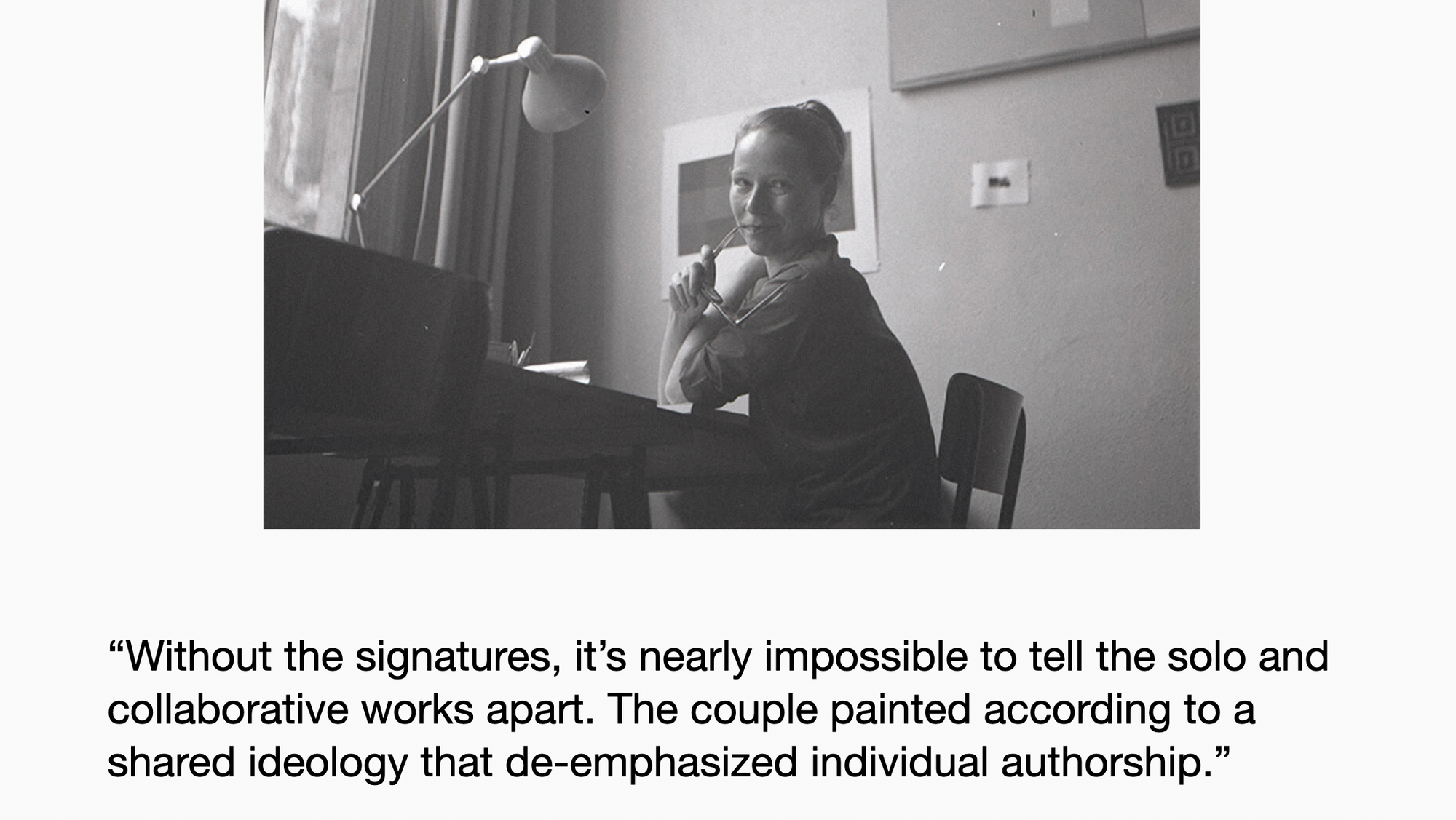
I highly recommend taking the time to read through all of the links that I'm including throughout the text to get the full picture, as it's not entirely possible to include all of her endeavors from this period of time in one article. Vera Molnar's artistic career throughout the years is incredibly rich, multifaceted and is tightly interconnected to the endeavours of her contemporaries. There's many lessons to be learned.
In the 1950s she continued to experiment with systematic approaches towards art making, which in a way were preparatory experiments to what would follow in the next decade. I was surprised that it was quite difficult to find pictures of her artworks from this period of time, and after extensive research the extent of Vera Molnar's entire body of work is still a bit unclear to me. I did however find enough material to showcase this era:

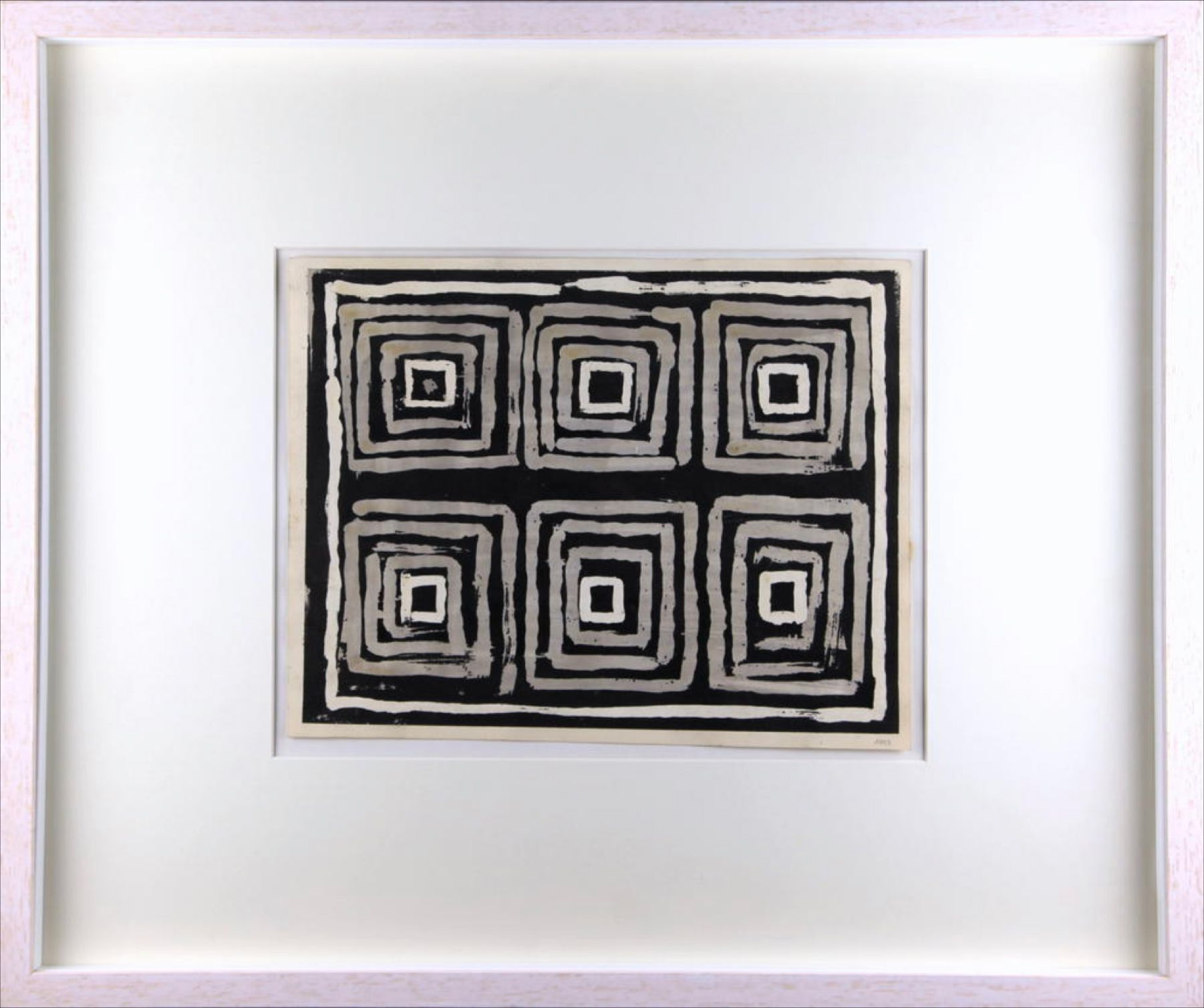

The rectangle would later proceed to become the most important shape in her aesthetic.
Machine Imaginaire and GRAV
Vera Molnar's art was heavily influenced by constructivist principles. Constructivism is an art movement in which art is to be constructed rather made, and in turn actually finds it's origins with collages from Picasso that inspired Vladimir Tatlin during a visit. In the same year, Vladimir Tatlin would proceed to become a founding figure of the constructivist art movement:

For Vera Molnar and her contemporaries this was a little bit different, although parallels can be drawn, the key-word for them was the term research. Treating art as a continuous investigation of techniques for the creation of patterns and shapes. A text by Barabara Nierhoff provides a quote by Pierre Descarques (I couldn't find the original source), he states:
They do not compose anymore; their works have neither a beginning nor an end; they experiment by applying possible combinations, such as statistics, probability, chance, mobility, etc.
This provides context for her most famous work of that era: la machine imaginaire. In the 1960s, prior to working with computers she invented her imaginary machine, a new and conceptual way for making art that paved the way for the rest of her career, and equivalently was an important pivot for generations of generative artists to come.
In the same conversation with Barbara Nierhoff she explains the idea behind the machine imaginaire:
In order to process my research series in a systematic way, I initially applied a technique I called machine imaginaire. I imagined I had a computer. I created a program and then, step by step, I realized simple, limited series which were self-contained, and thus did not skip any shape combinations
This concept is best understood by having a look at the resulting compositions:
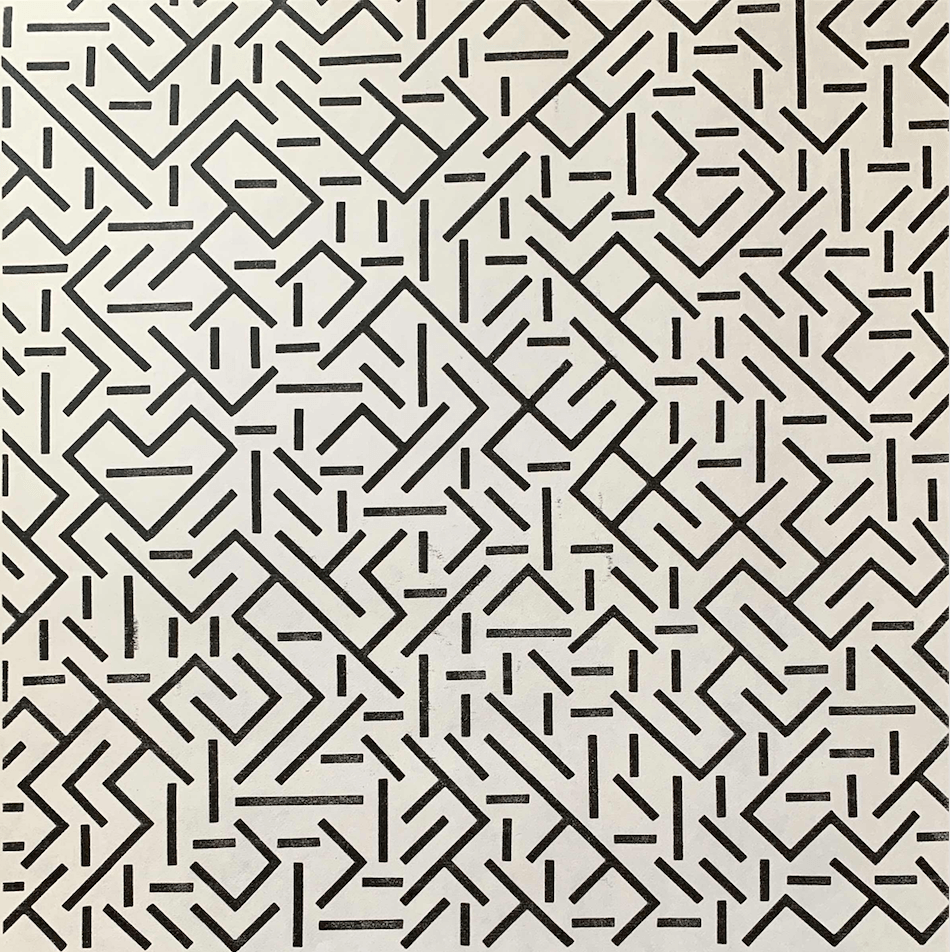
A little bit of a different explanation of the machine imaginaire can be found in a recent interview with her by Right Click Save, that elucidates the thought process behind her method:

In essence the machine imaginaire is a set of rules that she put in place and then realized by hand. Naturally, randomness was already a component in her work at the time. Seeing the above composition, it's difficult to distinguish it from her early works that were actually generated by computers.
At the same time she became a founding member of the Research Group for Visual Art (“Groupe de Rechereche d’art Visuel” or GRAV) alongside her contemporaries Morellet, Julio Le Parc, and Jesus Rafael Soto, as well as her husband Francois (and other artists of the era, different resources provide different lists of names).
The primary mission of GRAV was the investigation of collaborative approaches to kinetic and interactive installations, as well as how they could make the viewer an active participant of the art. Essentially, what we know today as interactive art installations. A good recount of their activities and their manifesto can be found here.
If there is a social preoccupation in today’s art, then it must take into account this very social reality: the viewer.
They did however leave the group only a few months later due to disagreement on what they believed research to be. The dispute was primarily on Francois' part but Vera left in solidarity. A short passage of the lettre that Francois wrote on the occassion of separating from the group can be found here (in french though).
Discovering Computers
When she was asked about how she first heard about computers, in the interview with MHK she tells the tale (translated from german):
I heard about it. Such things don't exist at all in Art. Sometimes you don't know how things come to you. Then I talked to someone about it, and I read about it. And I had this crazy idea that I could use it for Art
It took three applications to the dean of Sorbonne before she was granted access to a computer that was originally reserved for the purpose of scientific computing. In a conversation with Hans-Ulrich Obrist, a swiss art curator, she provides a more detailed account of her attempts to get access to the computer:
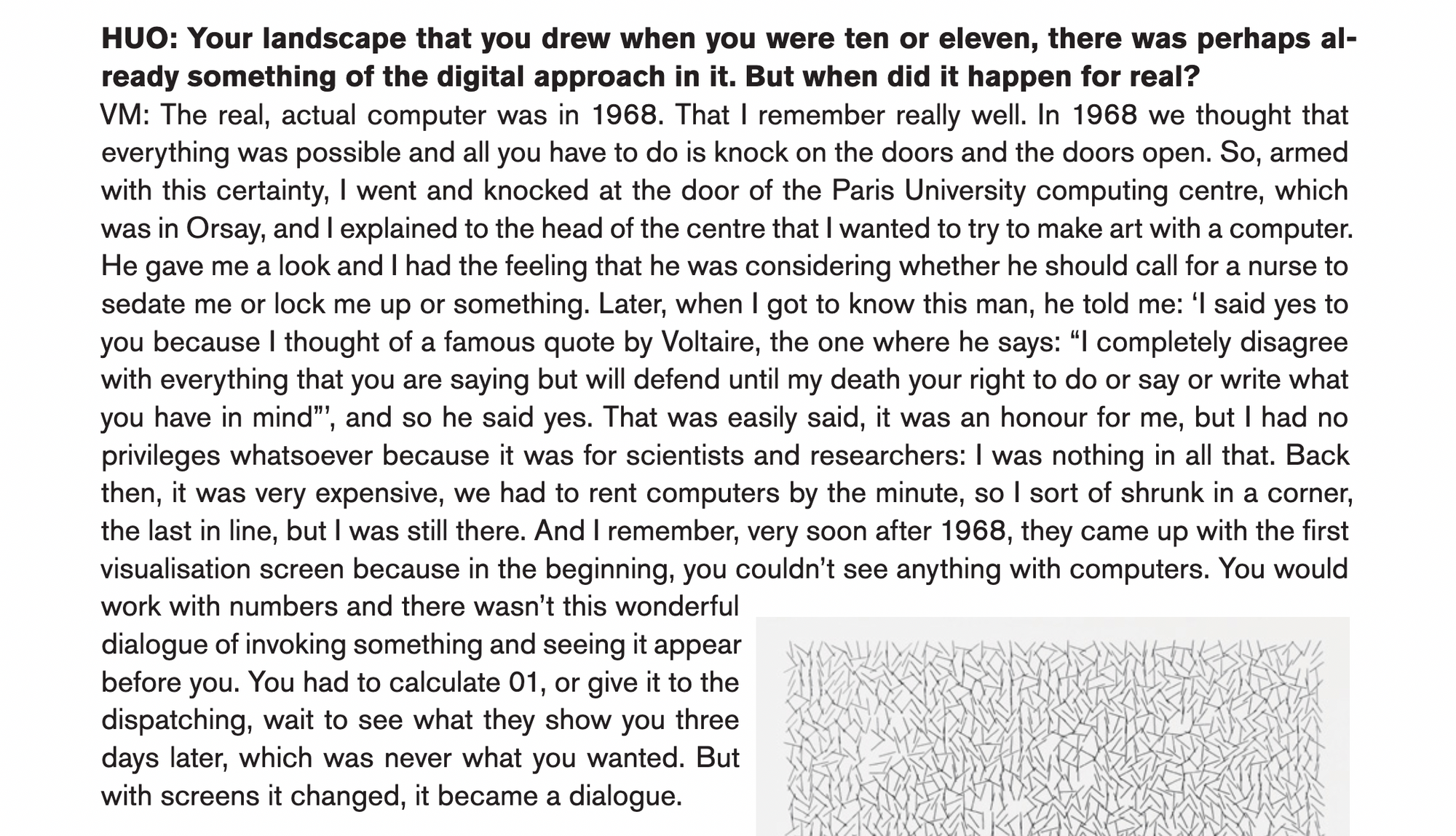
This newfound medium would soon completely transform Molnar's process, which she would later refer to as "entering in a dialogue" with the machine.
The first computers at the time did not have a display or screen of any sort. Working with them was arduous and there was a delay between handing in the code and getting the results back, usually three days later. Even though she did enroll in a Fortran course, and was even able to create punching cards, I believe that Francois helped her with this endeavor - in the beginning at least.

Interruptions is Molnar's very first computer generated artwork.

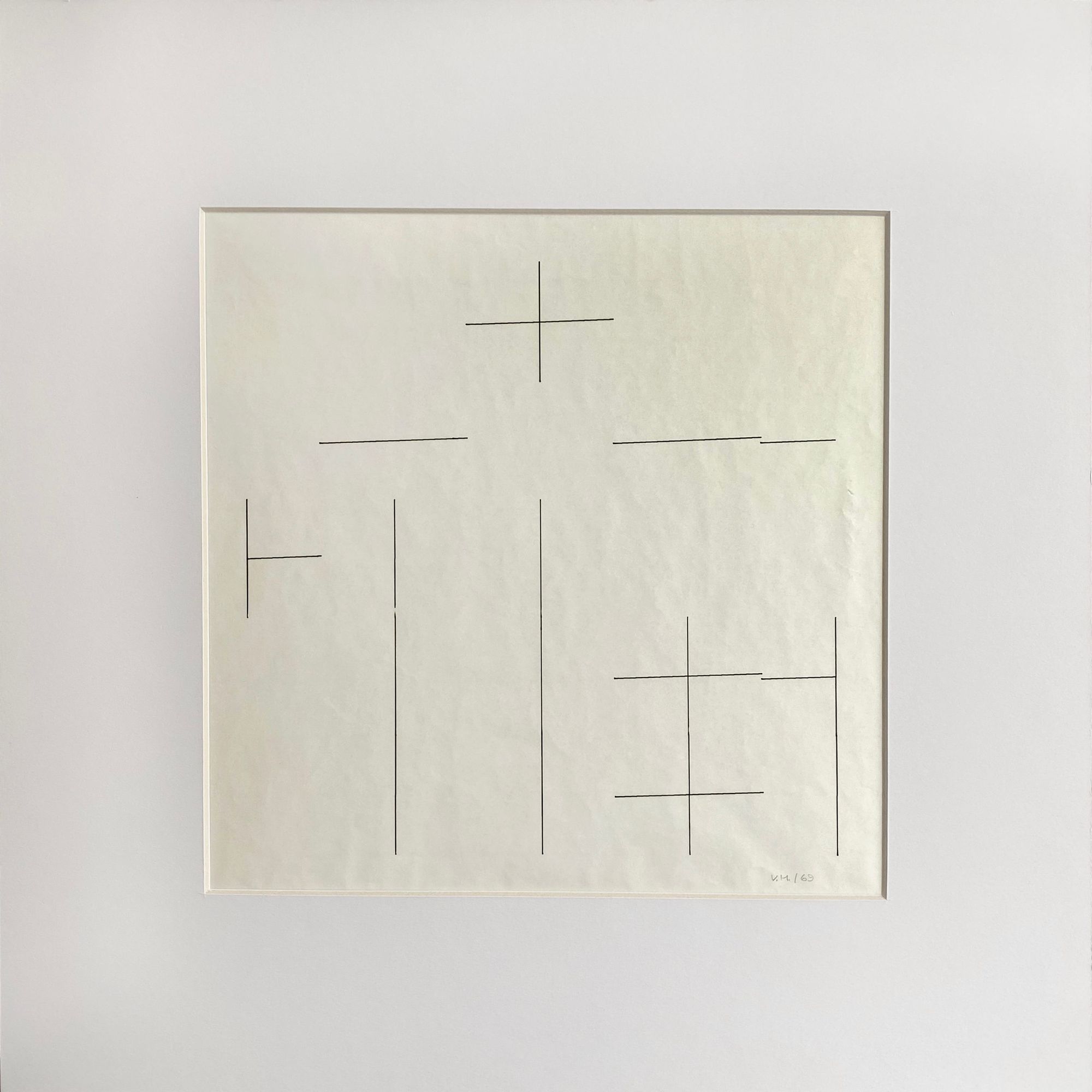
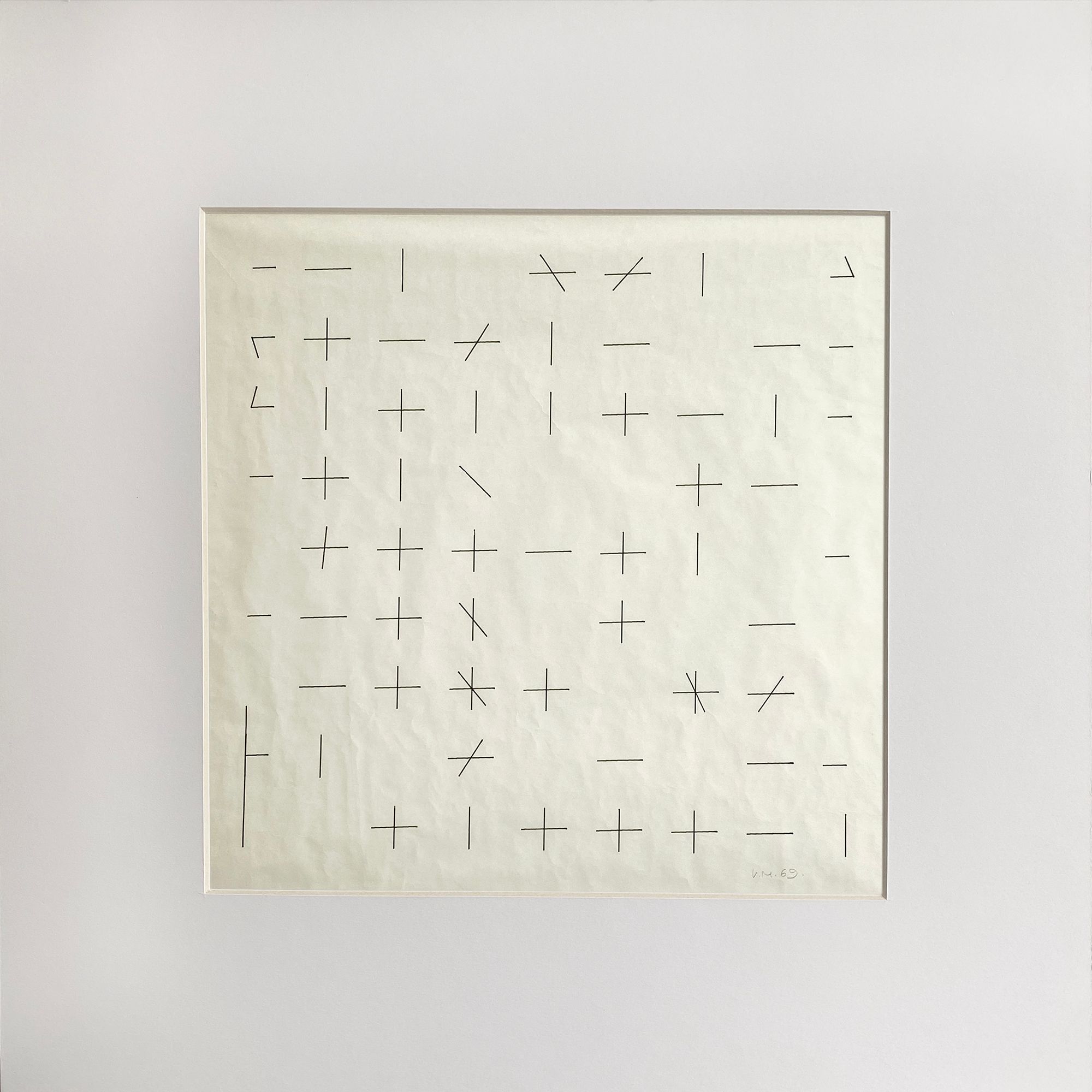
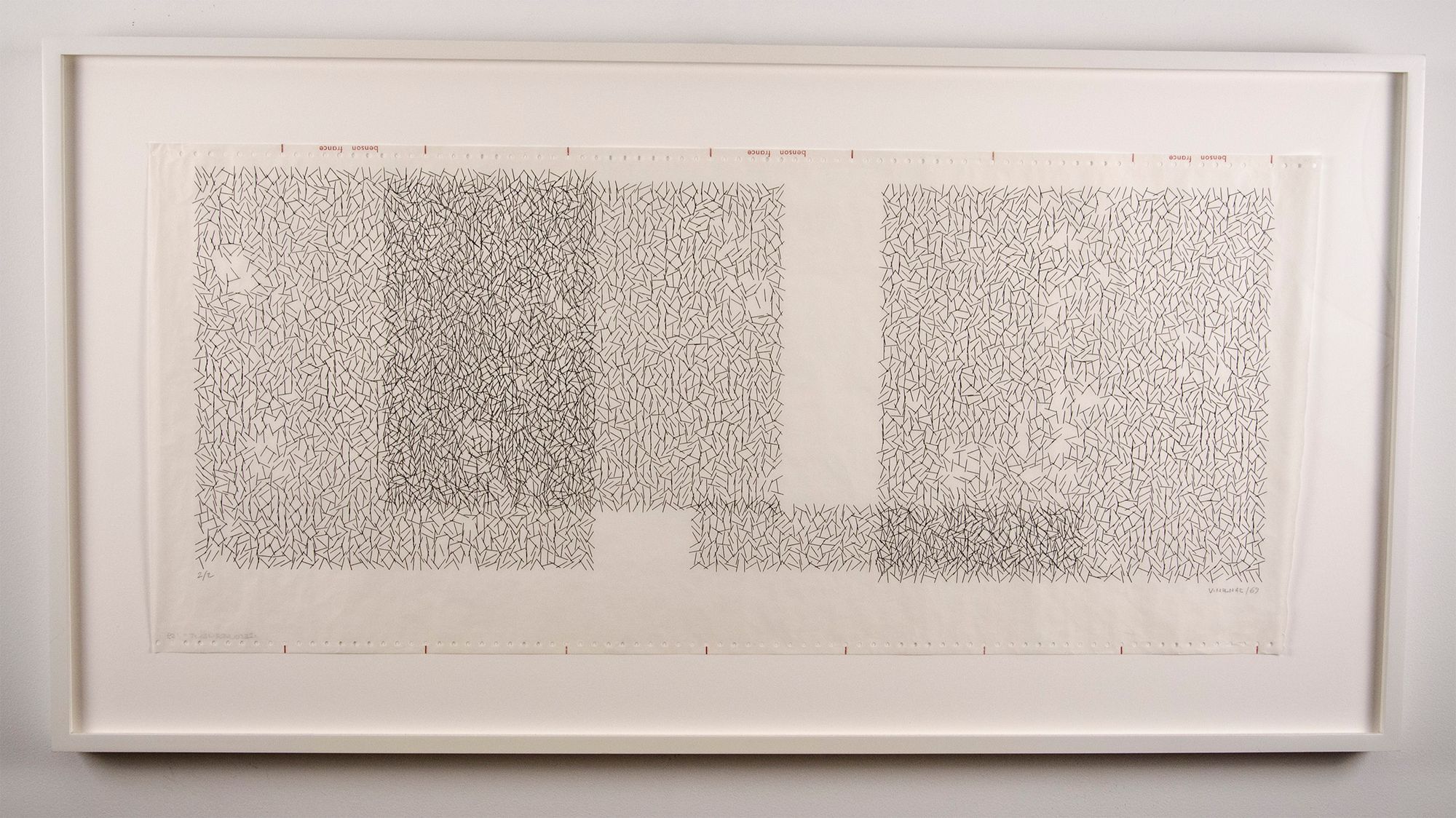
I would genuinely love to have a peek at the code that created these pieces from the late 1960s. What did it look like? How was randomness implemented? How did you draw lines? How did you pass this information to the plotter? Why have all these questions never been asked in the many interviews that were done?
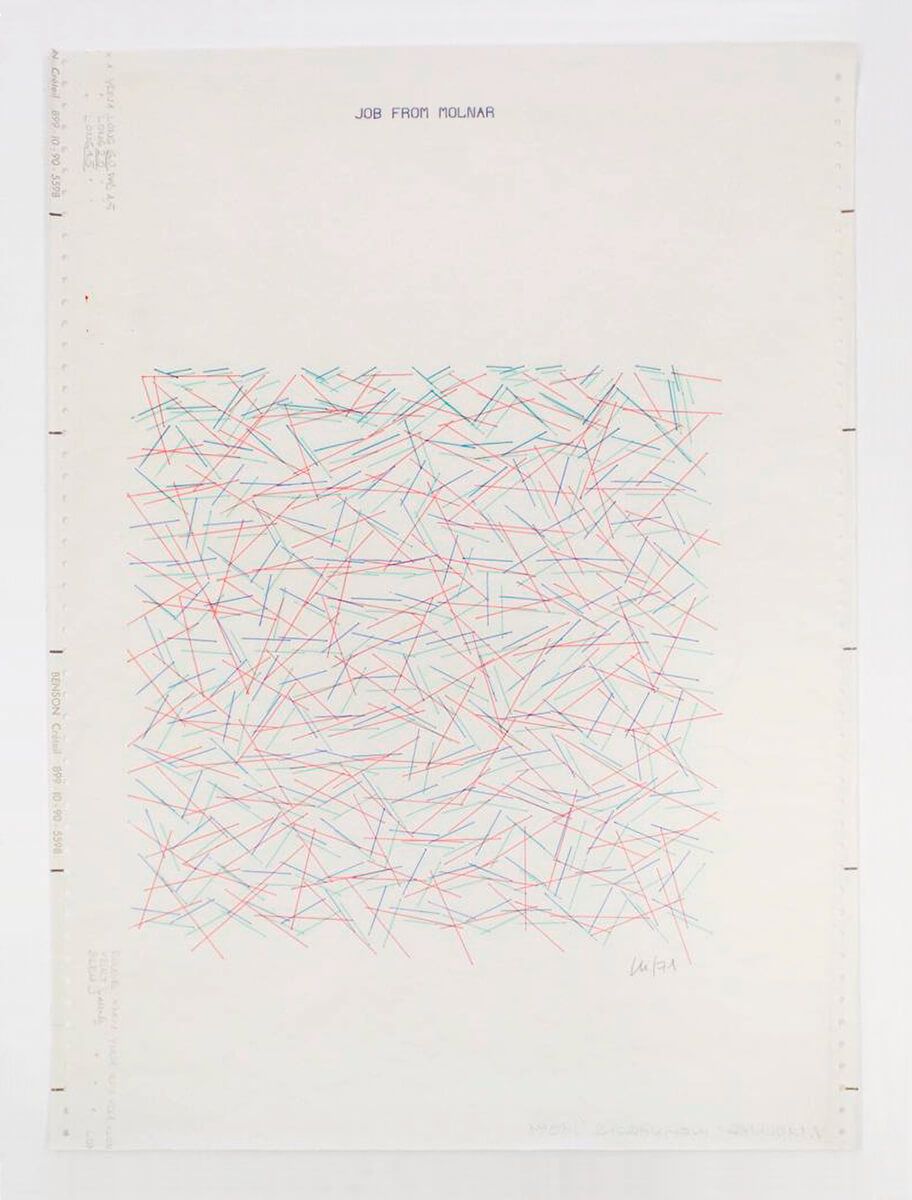
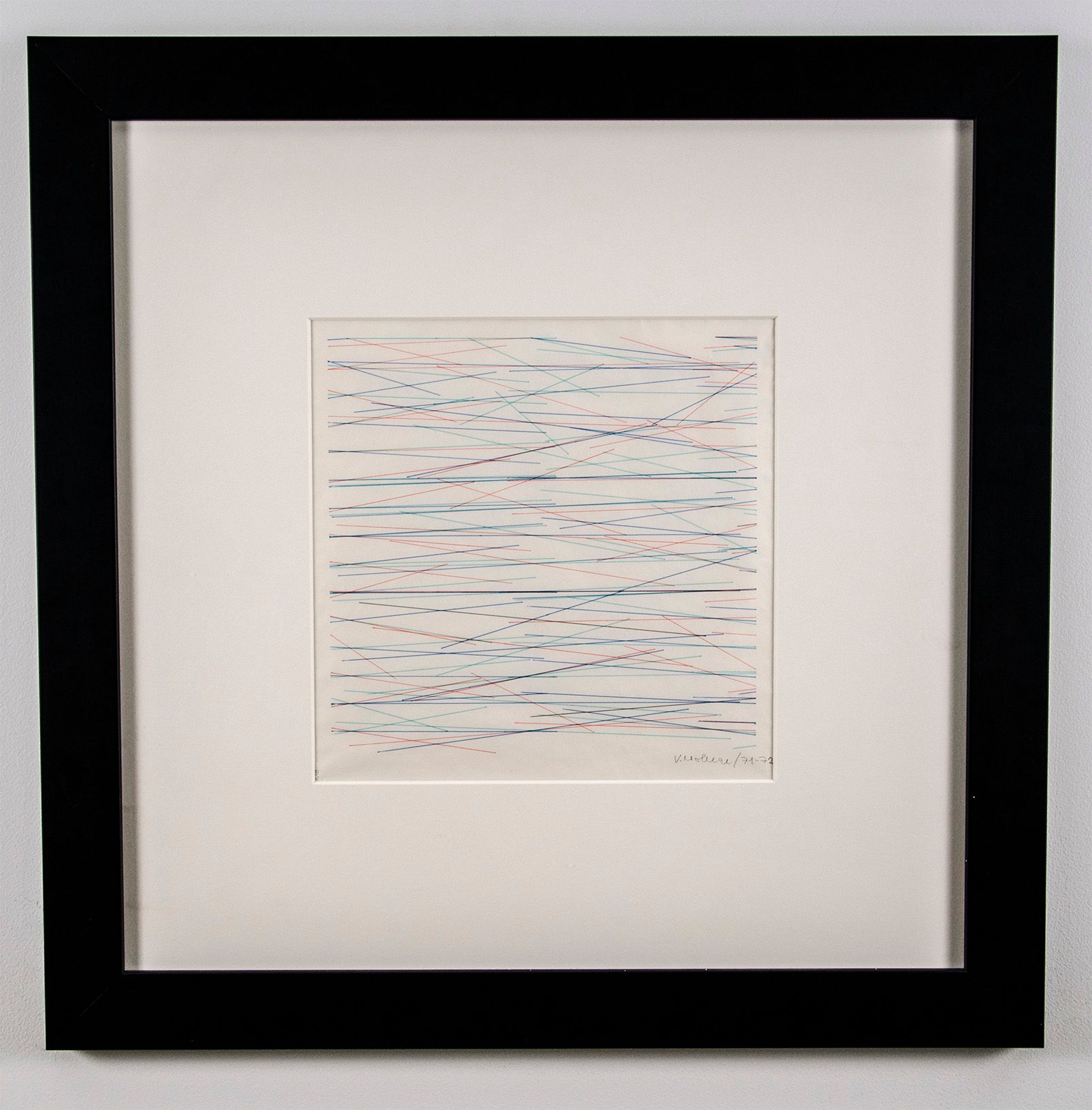
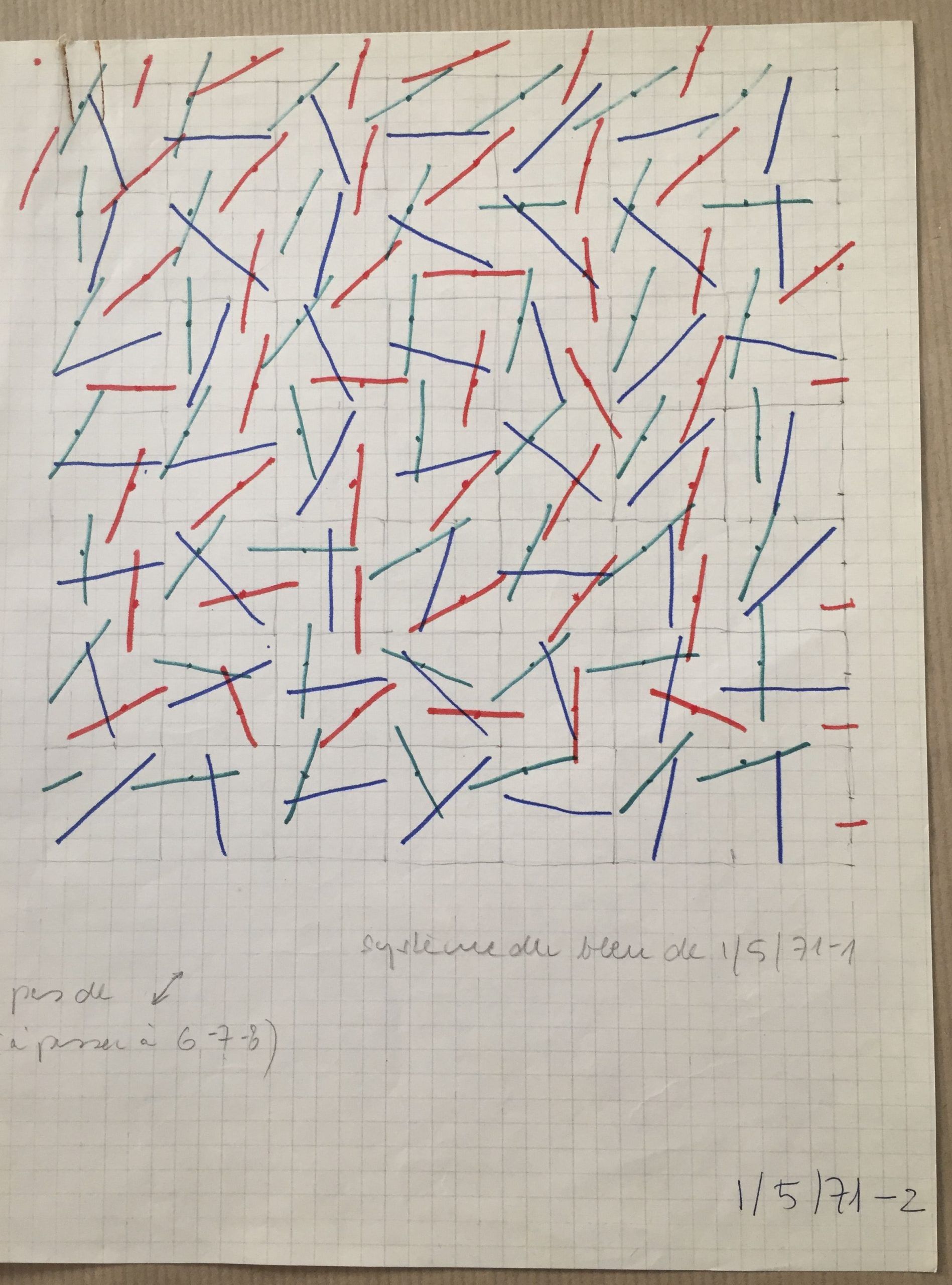
Backlash
This new way of making art with computers was met with resistance. Even if they didn't say it out loud, many of her artistic contemporaries were not very fond of her experiments:

These experiments provoked her peers, whom she remembered as being “scandalized!—I had dehumanized art.”

Undeterred by this however, Molnar continued to work with computers.
In conversation with the Machine
Fast forwarding a couple of years, the first computers with screens were installed in 1974. And it was a game-changer for Vera Molnar:
I think the screen was invented for me. The scientists didn’t need it, because they could wait a day to see their calculations. But to see a square that transforms itself bit by bit into a trapezoid, the screen is crucial.
In the artnet interview she states: It changed everything
Being able to see what your computer produced on the spot accelerated the entire process. Vera Molnar started calling it the "conversational" method, a term most likely borrowed from french where the word conversationnel would rather mean interactive. In comparison to the blind computing approach, as it was called at the time, the screen now provided an interface between the user and the computer.
The in depth piece by the dossier HOLO discusses this aspect of her work in detail. Having access to a screen is something that we take for granted in our life today, when just a few decades prior such things were imaginable. Vera Molnar remembers these days with great fondness:
I argue in my dissertation that the advent of interactivity was the most significant milestone in Molnar’s career, though it’s been overlooked in both studies of her work and in the history of computing more broadly.
When I asked her about the screen in our very first conversation, a shaky phone call in August 2017, I could hear her beaming as she said, “The IBM 2250!” She recalled her first time using the screen like a sort of rebirth, akin to moving to Paris at age 23.
Albeit having access to this modern technology, Vera continued to work with paper and using at the primary method to plan out her ideas and sketches, she says "I always had a mini atelier in my handbag"


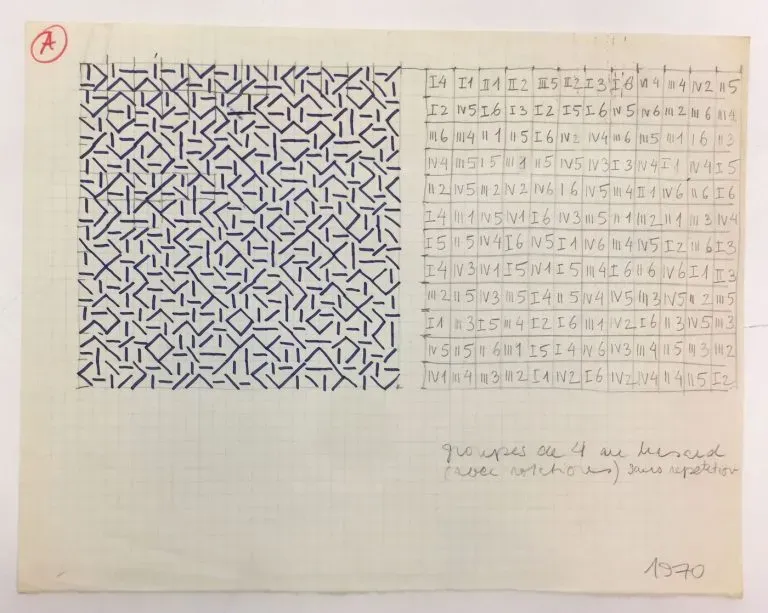
1% Randomness
In the 1970s Vera began thoroughly exploring this newfound medium, and in a way started doing what many generative artists still do till today.
Harnessing Randomness.
The idea of incorporating randomness in her work is inspired by a phrase from Gogins, she states it in german in the MHK interview:
Beauty sat on my lap, and suddenly I was not hungry anymore.
What she tries to say is that she quickly tired of the orderliness and regularity of the shapes that the computer produced. I can relate to her very well when she says "I can't easily explain why, but I thought it would look more interesting if I inserted a little irregularity".
There's this misconception that art always has to have some deeper meaning, or that the elements in an artwork need to be symbolic of something, but for Vera Molnar it was never like that - she simply enjoyed creating and searching for patterns and ideas.
In this manner she created her arguably most famous series (Dés-)Ordres which in english means (dis)order and is referential to that idea:
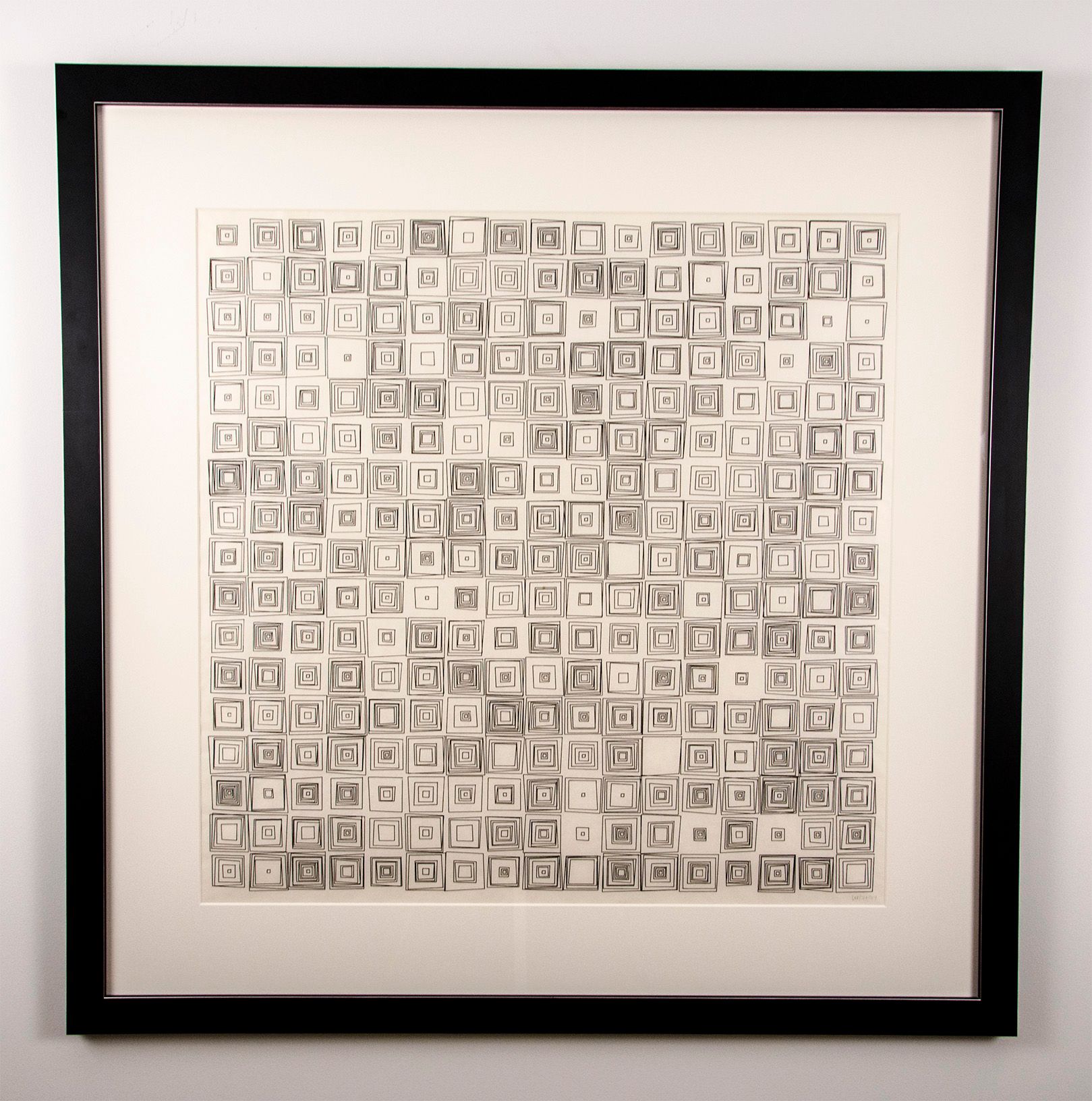
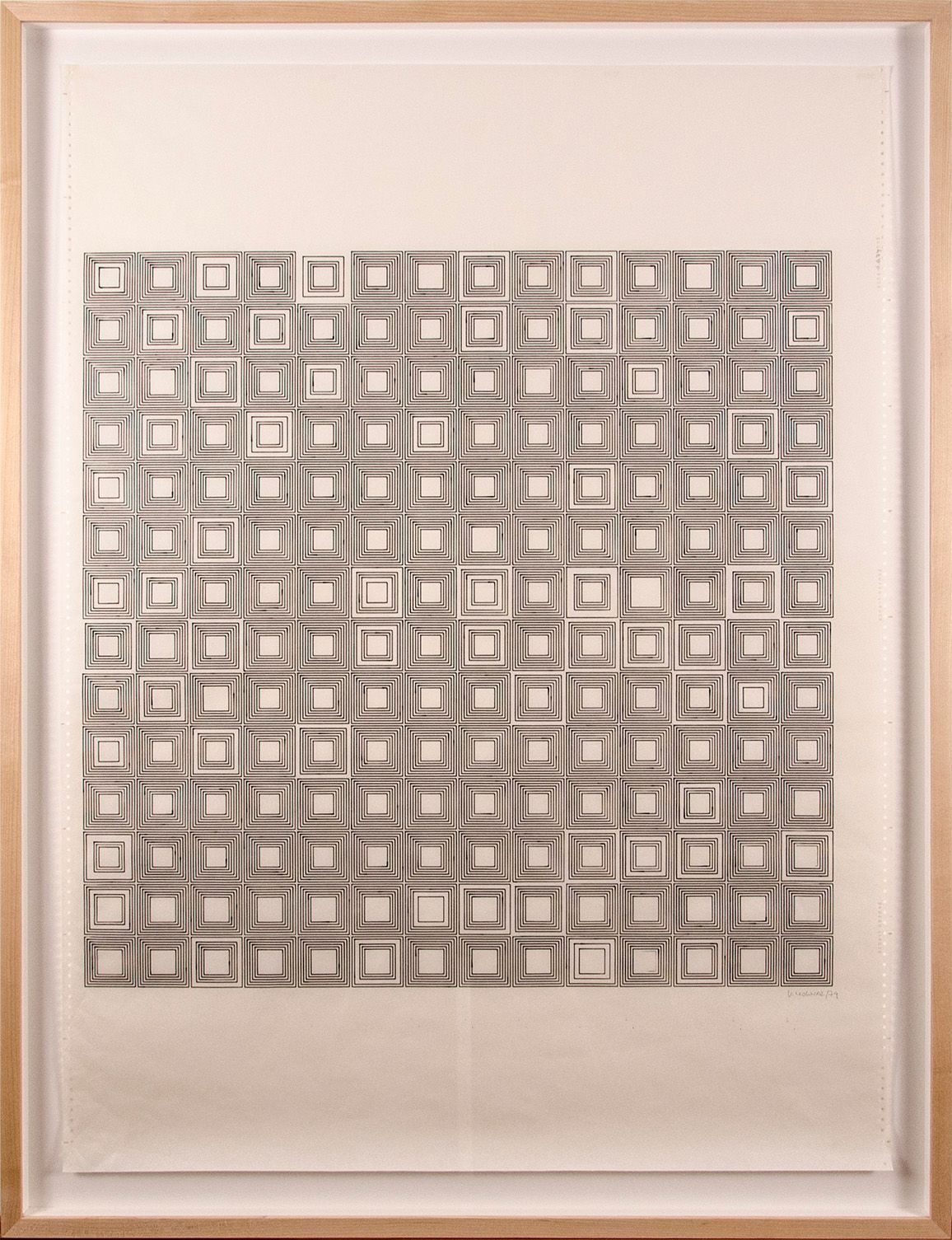
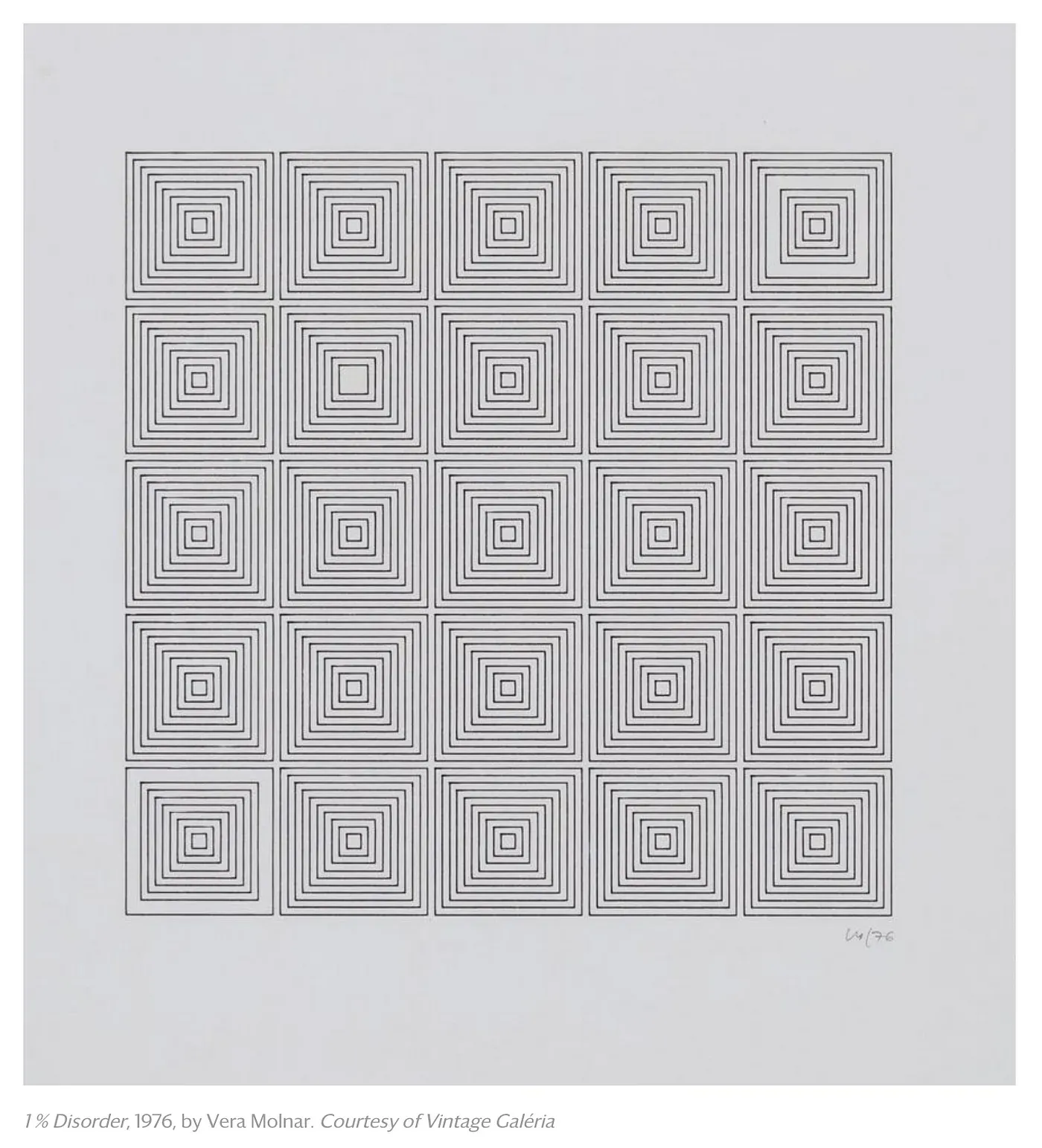
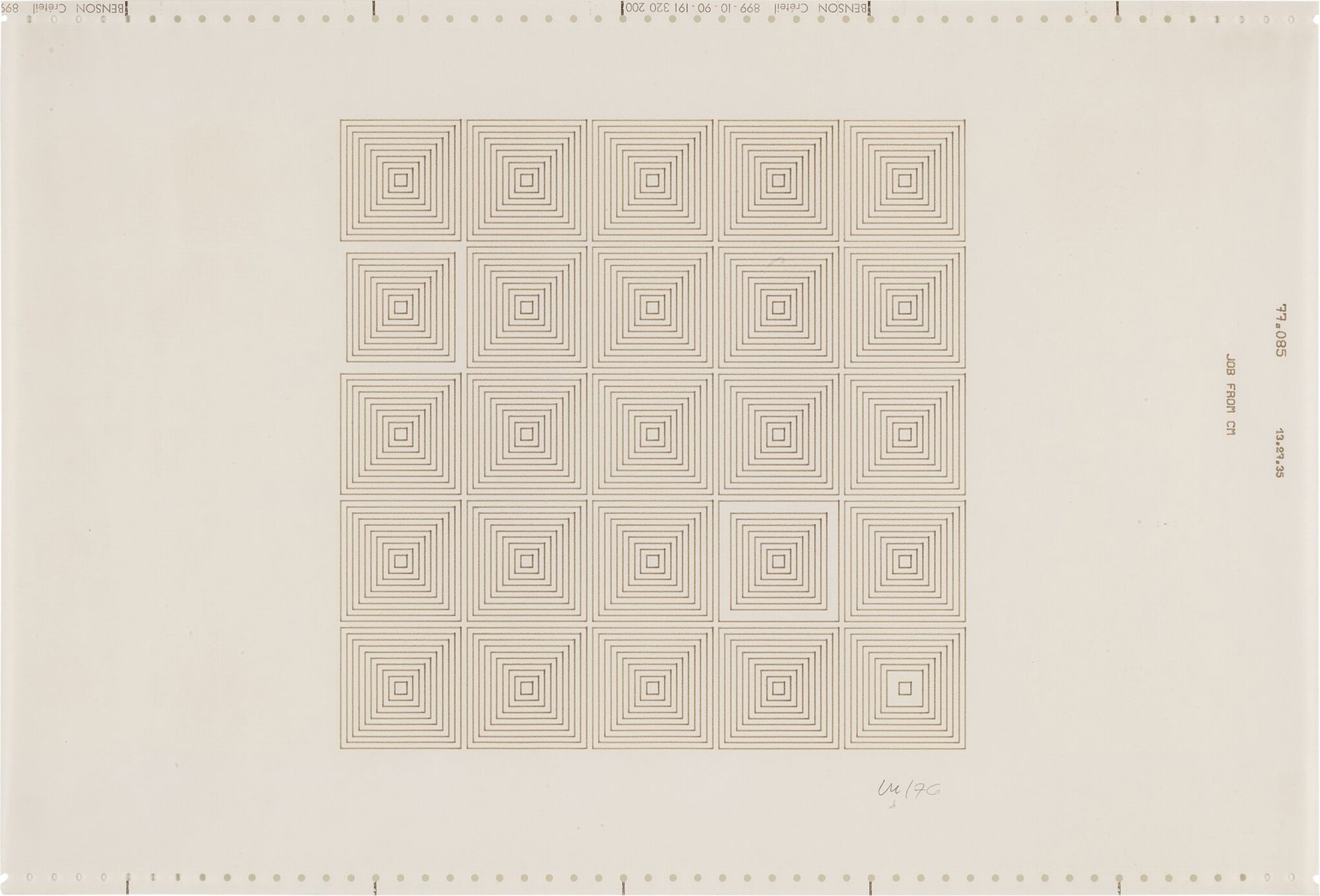

Intuition and Surprise
For Vera, the computer enriched her practice immensely. Having created art for the past two decades in a systematic manner, there wasn't much room for that thing called intuition... and in a way she didn't need to have intuition, since the rules of her systems already predicted how to proceed.
With the computer she could continue working in this way by using randomness. She makes clear that when she talks about randomness, she doesn't mean it in the same manner that the dadaist movement operated, where the ideology was that anything could be art. To her, randomness was a tool that helped her converge towards outputs that she liked and often couldn't have conjured by using her imagination alone. That is not very different from how many generative artists operate today.
It’s a paradox. That using computers dehumanises art. The opposite is true. Because it’s thanks to all this technology, we can get very close to what we have imagined. That otherwise we might not have found.
Vera Molnar had a clear stance on the question of "Who is making the Art? The computer or the artist" - it's a dialogue between the two.
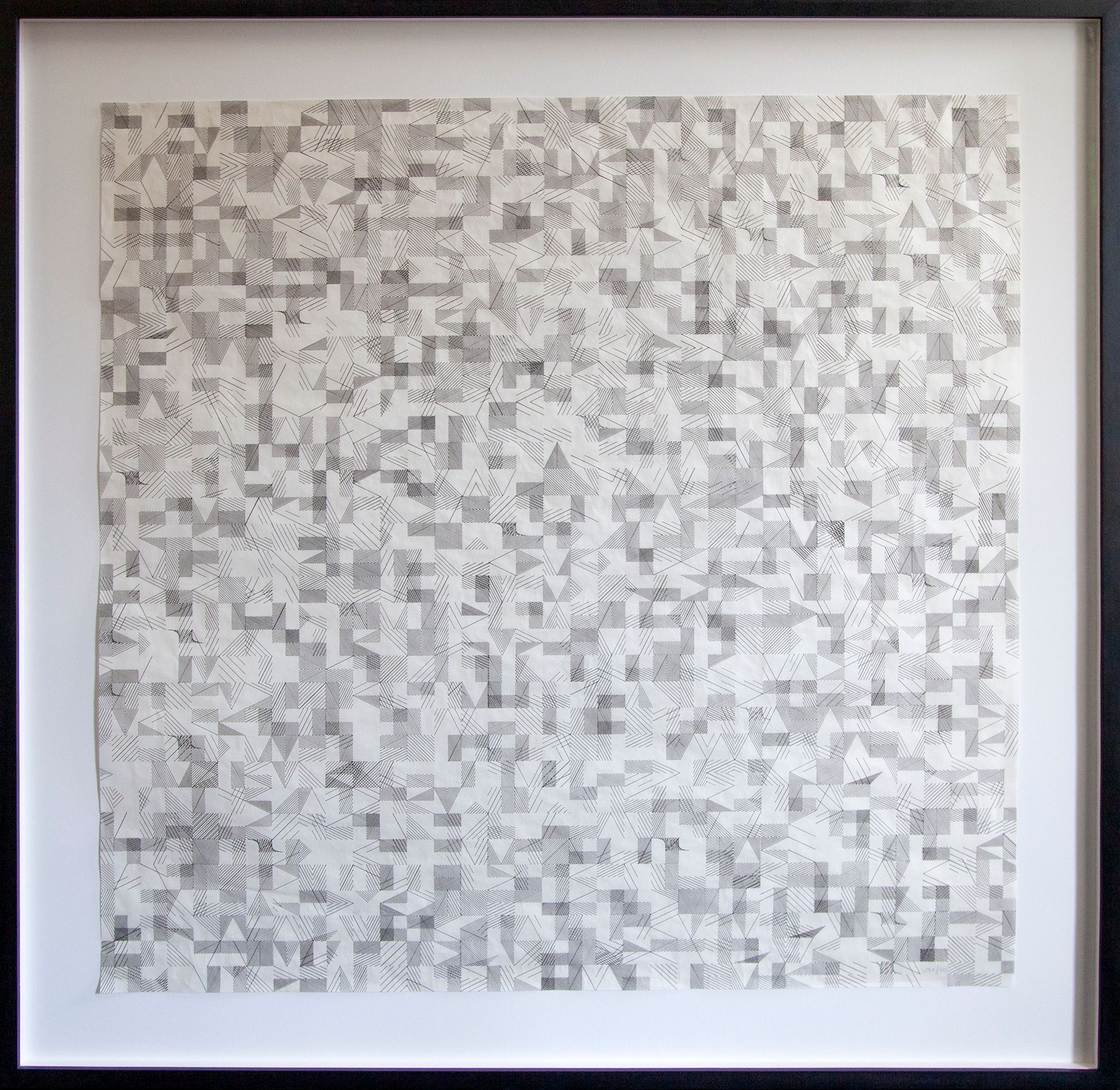
By then she had also started to incorporate the little surprises whenever they occurred. The computer will eventually produce unexpected results, when you don't know what exactly you're looking for:
And on the other hands, mistakes are also good surprises. Something comes that you had’t wished for at all. Ultimately the intuition of an artist is the ‘random walk’ of the computer. [...] I adore taking little side routes, I adore allowing myself to be disturbed. I don’t like obedience.

Searching for hidden rules
A fond memory that she has of her father, was when he taught her to draw football players on the margin of newspaper pages. But there was a catch: the entire drawing had to be done with a single line. She would use this idea later on several times throughout her works, being inspired by other artists that did similar line drawings like Paul Klee and Picasso.
The idea of hidden rules, governing and restricting the process with which the art is created, is a central topic of her work. Posing question and asking what if? is one of the best ways to come across new ideas and synthesize new works in that manner.
Closing Thoughts
“There was a time in my life when I was just François Molnár’s cook, and between courses I made my small squares,” is how she put it. “Now I’m going to Venice. It’s a big thing.”
Doubtlessly, Vera Molnar has played a significant role in shaping the generate art landscape as we know it today. From her novel systematic approach to art-making all the way to her first experiments with computers and plotters, her work stands as an inspiration to many till today.
There's much more to her career past the 1980s, which I might cover in a second part sometime soon. This was a genuine joy to put together and I thoroughly enjoyed researching all of the details. I hope you enjoyed reading it as much as I did writing it.
“I have no regrets. My life is squares, triangles, lines” — Vera Molnár
If you want to read more about generative art I recommend this article I wrote not so long ago:
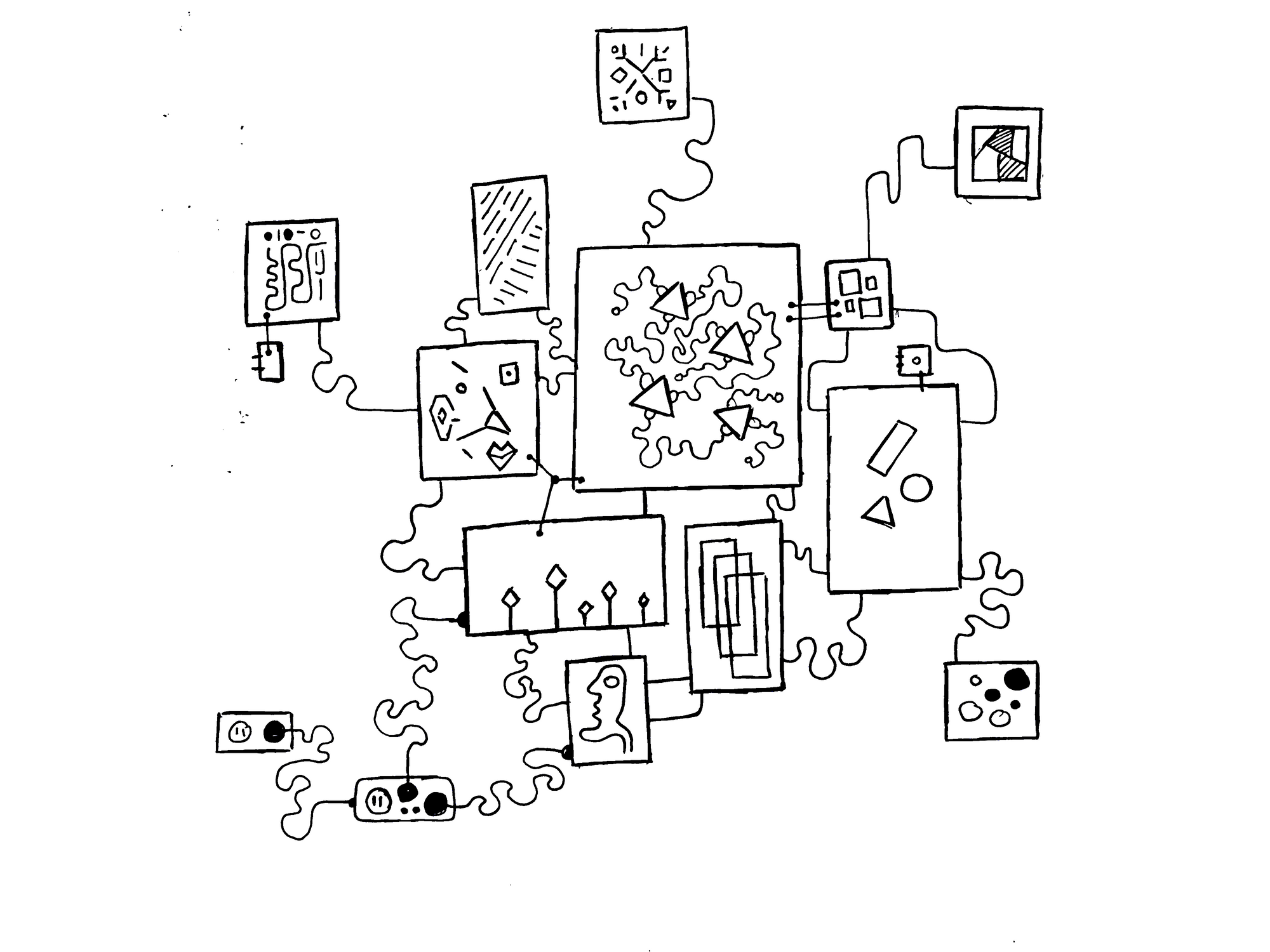
Cheers! Happy coding!
A list of Links
Here's a list of links for all the excerpts throughout the text. They are roughly in order of importance (wealth of information). Check all of them out, it's something that I could lose myself in for hours on end.
Main Resources
The best video interview of Vera Molnar is with Sabine Schaschl representing Museum Haus Konstruktiv, where the explains the important ideas behind her process. It is however in German and sadly has no subtitles:

Five other resources that were instrumental:
- One of her best interviews was a conversation that she had with Hans Ulrich Obrist.
- A really elaborate and in-depth recount of many periods of her life was this page on HOLO by Zsofi Valyi-Nagy.
- In conversation with Barbara Nierhoff for Vintage Galeria Budapest.
- In conversation with Jo-Lawson Tancred for Artnet.
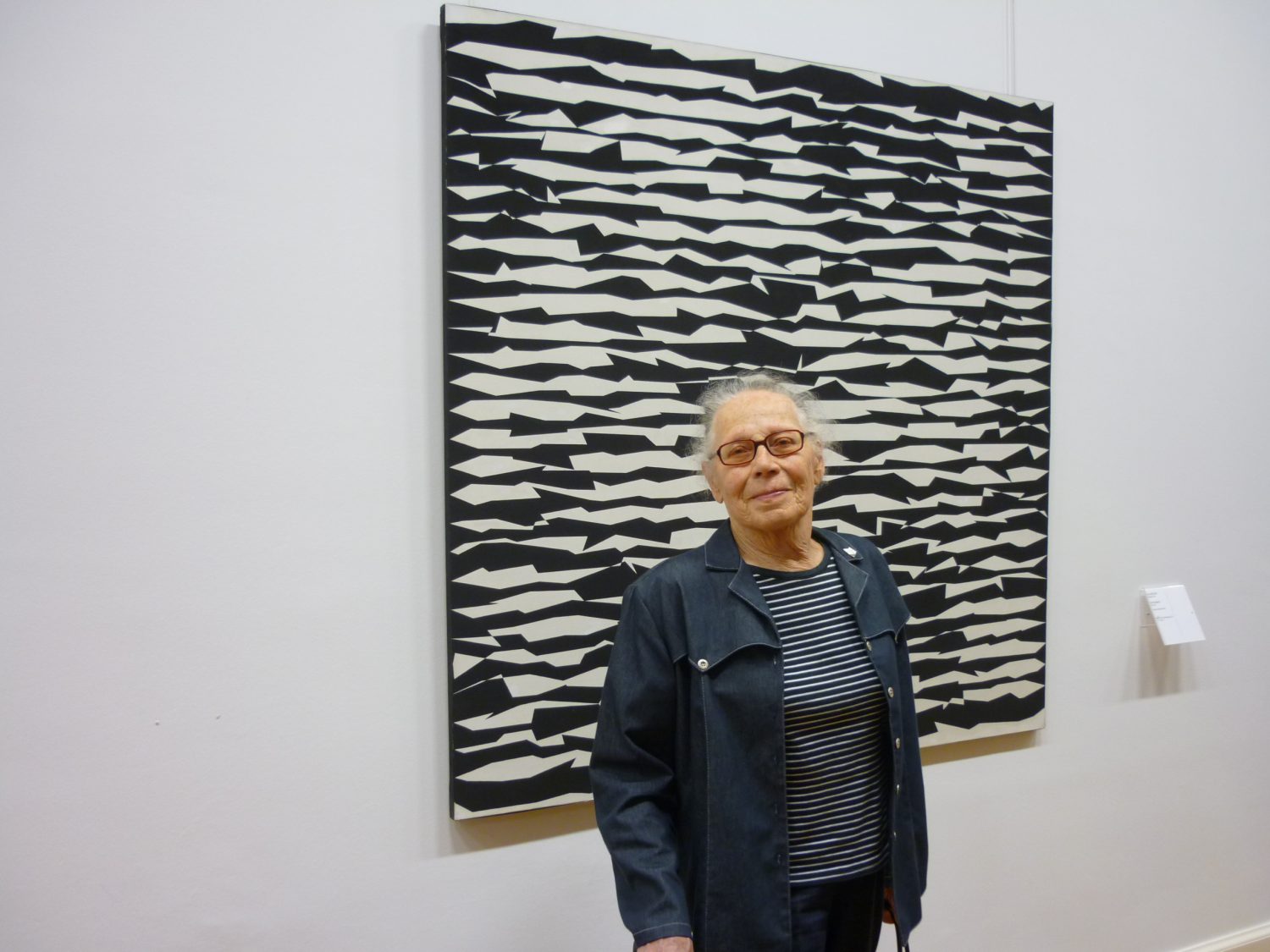
Other Resources
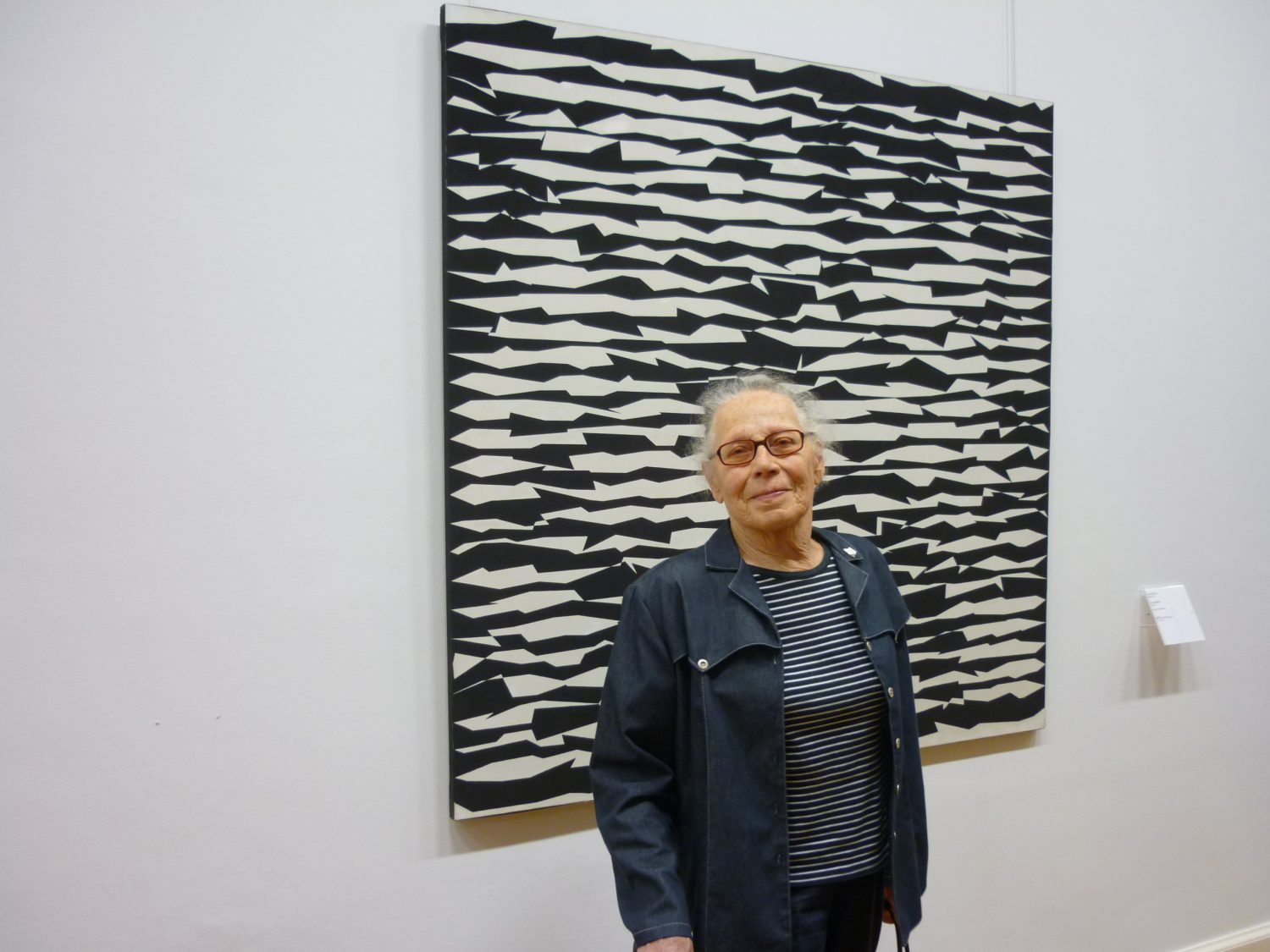


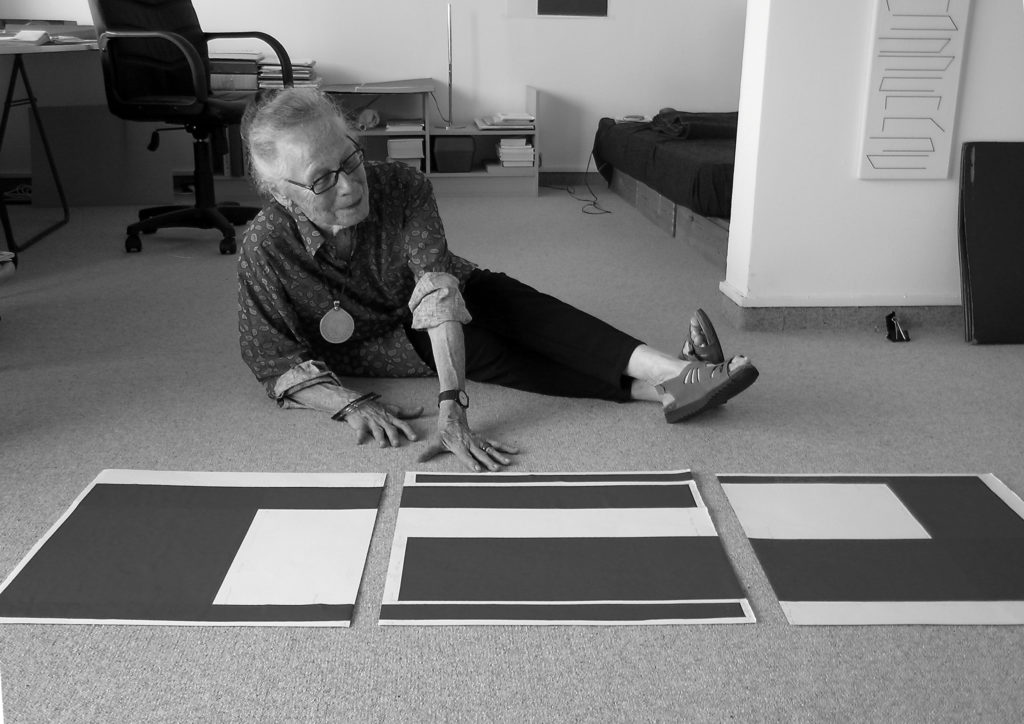

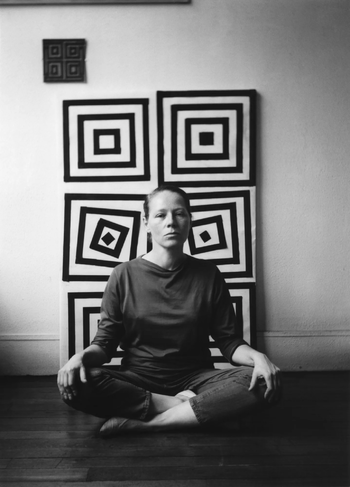
Image Resources
The best resource to find images for Vera Molnar's works is the Anne and Michael Spalter Digital Art Collection:

